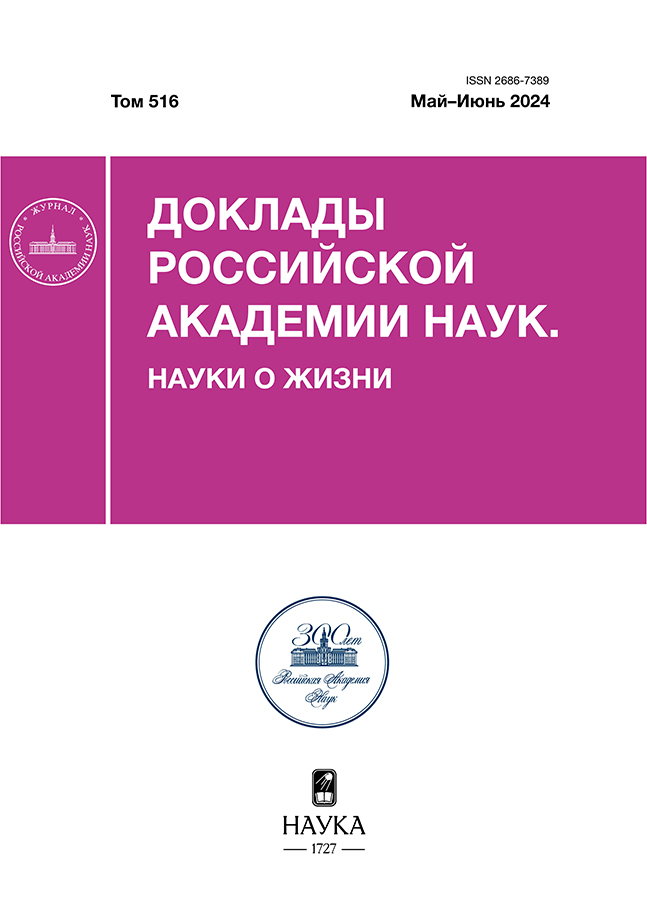Frequency-dependent variability of pulse wave transit time. Pilot study
- Авторлар: Grinevich A.A.1, Chemeris N.K.1
-
Мекемелер:
- Institute of Cell Biophysics of Russian Academy of Sciences
- Шығарылым: Том 516, № 1 (2024)
- Беттер: 55-58
- Бөлім: Articles
- URL: https://archivog.com/2686-7389/article/view/651430
- DOI: https://doi.org/10.31857/S2686738924030098
- EDN: https://elibrary.ru/VTQFDC
- ID: 651430
Дәйексөз келтіру
Аннотация
The dynamics of the pulse wave (PW) associated with the PW transit time variability (PWTTV) determines the peripheral pulse rate variability, which is used as a surrogate for heart rate variability (HRV). The aim of the work is to analyze the frequency-dependent dynamics of PWTTV and to identify the possible frequency-phase modulation of PW velocity oscillations on the transit from the heart to the soft tissues of the distal parts of the upper extremities. RR-interval recordings and synchronous records of photoplethysmograms of 12 conditionally healthy subjects from the PhysioNet open database were used in this work. Using the Hilbert–Huang transform 3 spectral components of PWTTV and HRV were identified. It was shown that the amplitudes of PWTTV oscillations were many times (up to 8.4 times) smaller than the amplitudes of HRV, and the peaks of PWTTV spectral components were shifted towards higher frequencies than those of HRV. Functional relations between PWTTV and HRV, which can determine the phase modulation of periodic changes in the velocity of propagation of PW, were revealed.
Негізгі сөздер
Толық мәтін
Авторлар туралы
A. Grinevich
Institute of Cell Biophysics of Russian Academy of Sciences
Хат алмасуға жауапты Автор.
Email: grin_aa@mail.ru
Ресей, Pushchino
N. Chemeris
Institute of Cell Biophysics of Russian Academy of Sciences
Email: nikolai.chemeris@mail.ru
Ресей, Pushchino
Әдебиет тізімі
- Heart Rate Variability. Standards of Measurement, Physiological Interpretation, and Clinical Use. Task Force of the European Society of Cardiology and the North American Society of Pacing and Electrophysiology // Circulation. 1996. V. 93. P. 1043–1065.
- Mattace-Raso F.U.S., Hofman A., Verwoert G.C., et al. Determinants of Pulse Wave Velocity in Healthy People and in the Presence of Cardiovascular Risk Factors: “Establishing Normal and Reference Values” // Eur. Heart J. 2010. V. 31. P. 2338–2350.
- Mejía-Mejía E., May J.M., Torres R., et al. Pulse Rate Variability in Cardiovascular Health: A Review on its Applications and Relationship with Heart Rate Variability // Physiol. Meas. 2020. V. 41. P. 07TR01.
- Котовская Ю.В., Рогоза А.Н., Орлова Я.А. и др. Амбулаторное мониторирование пульсовых волн: статус проблемы и перспективы. Позиция российских экспертов // Кардиоваскулярная терапия и профилактика. 2018. Т. 17. С. 95–109.
- Leloup A.J.A., Van Hove C.E., De Moudt S., et al. Vascular Smooth Muscle Cell Contraction and Relaxation in the Isolated Aorta: A Critical Regulator of Large Artery Compliance // Physiol. Rep. 2019. V. 7(4). P. e13934.
- Yuda E., Shibata M., Ogata Y., et al. Pulse Rate Variability: A New Biomarker, not a Surrogate for Heart Rate Variability // J. Physiol. Anthropol. 2020. V. 39. P. 21.
- Гриневич А.А., Чемерис Н.К. Спектральный анализ вариабельности сердечного ритма на основе метода Гильберта–Хуанга // Доклады Российской академии наук. Науки о жизни. 2023. Т. 511. С. 395–398.
- Гриневич А.А., Гарамян Б.Г., Чемерис Н.К. Локализация механизмов амплитудно-частотной модуляции пульсового кровенаполнения микрососудистого русла мягких тканей. Пилотное исследование // Доклады Российской академии наук. Науки о жизни. 2022. Т. 504. С. 223–228.
- Mehrgardt P., Khushi M., Poon S., et al. Pulse Transit Time PPG Dataset (version 1.1.0). 2022. PhysioNet.
- Goldberger A., Amaral L., Glass L., et al. PhysioBank, PhysioToolkit, and PhysioNet: Components of a new research resource for complex physiologic signals // Circulation [Online]. 2000. V. 101(23). P. e215–e220.
- Park J., Seok H.S., Kim S.-S., et al. Photoplethysmogram Analysis and Applications: An Integrative Review // Front. Physiol. 2022. V. 12. P. 808451.
- Huang N.E., Zheng S., Steven R.L., et al. The Empirical Mode Decomposition and the Hilbert Spectrum for Nonlinear and Non-stationary Time Series Analysis // Proceedings of the Royal Society of London. Series A: Mathematical, Physical and Engineering Sciences. 1998. V. 454. P. 903–995.
- Тычков А.Ю. Применение модифицированного преобразования Гильберта–Хуанга для решения задач цифровой обработки медицинских сигналов // Известия высших учебных заведений. Поволжский регион. Технические науки. 2018. Т. 3. С. 70–82.
Қосымша файлдар










